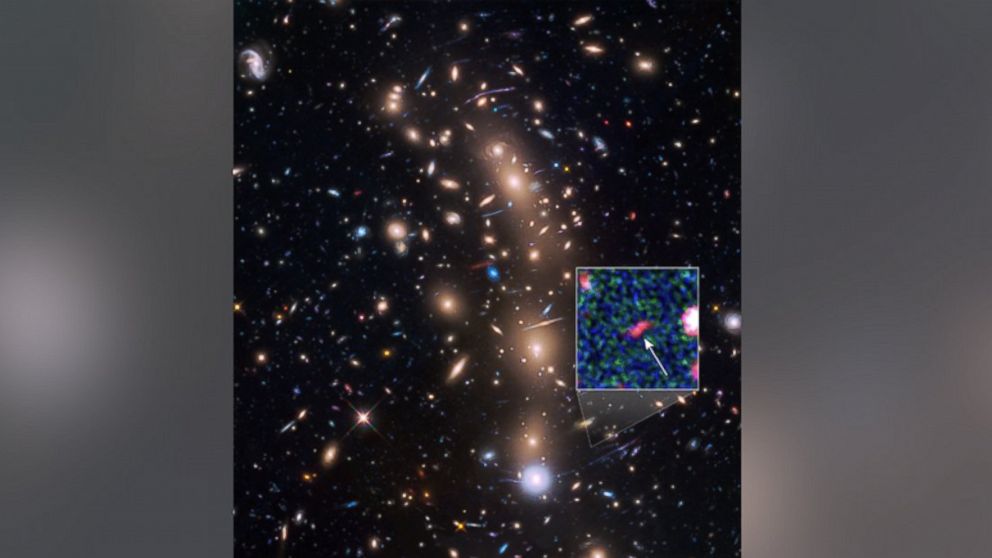NASA Spots Faintest Galaxy Dating Back to Early Universe
How scientists were able to discover the faint galaxy.

— -- NASA has spotted what is believed to be the faintest object ever seen in the early universe, giving scientists a new window into the period shortly after the Big Bang.
The galaxy, which has been named Tayna, meaning "first-born" in Aymara, a language spoken in the Andes and Altiplano regions of South America, is believed to be around 13.4 billion years old.
The Big Bang is estimated to have created the universe 13.8 billion years ago, after which scientists believe the first galaxies began to form half a billion to 1 billion years later. Finding such galaxies has been a challenge because their light is so faint, which makes the discovery of early galaxies especially intriguing to scientists.
While many large galaxies are known, finding the smaller ones has been a sort of fishing expedition for NASA. Tayna was discovered using observations from NASA's Hubble and Spitzer space telescopes, along with harnessing the power of a galaxy with the weight of a million-billion suns, which has acted as a natural magnifying glass by "bending and magnifying the light of far more distant objects behind it," NASA explained.
The discovery has NASA excited for the potential of the James Webb Space Telescope, Hubble's successor, which is scheduled for a 2018 launch. The new space telescope will act as a time machine of sorts, giving NASA its closest look yet at what happened shortly after the Big Bang.




